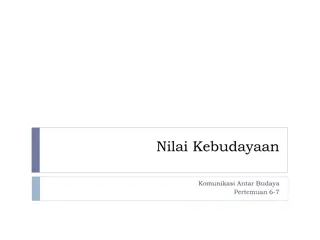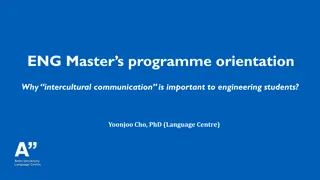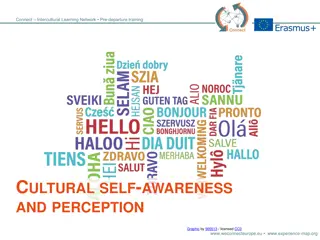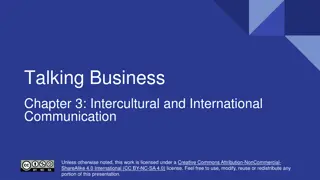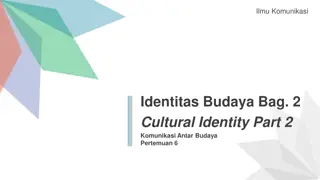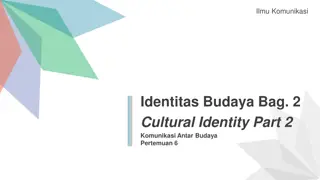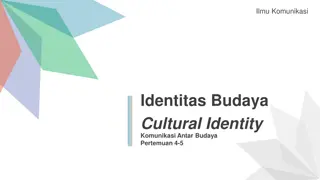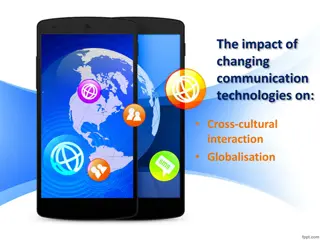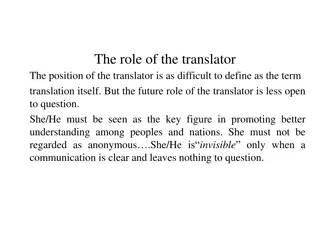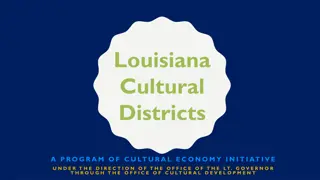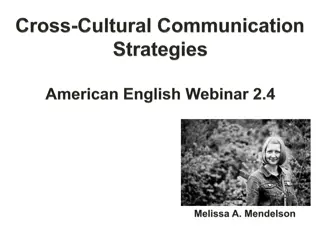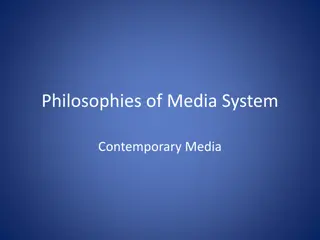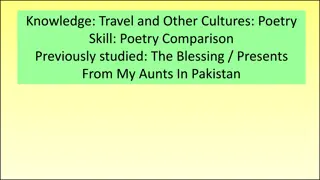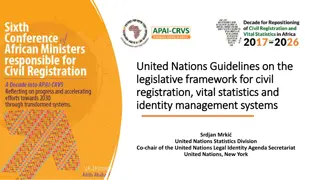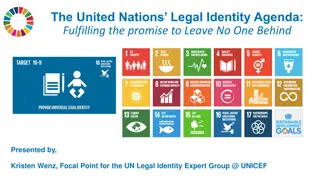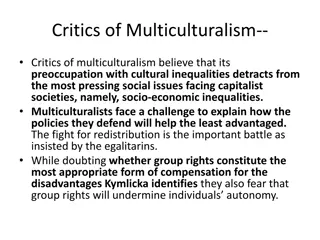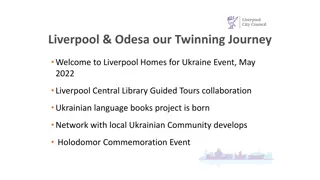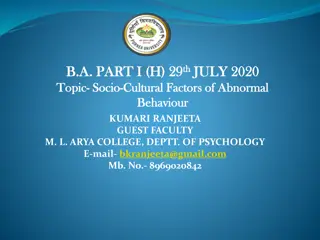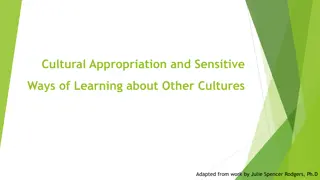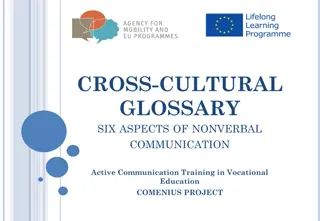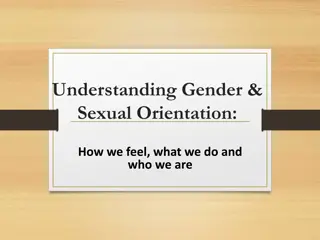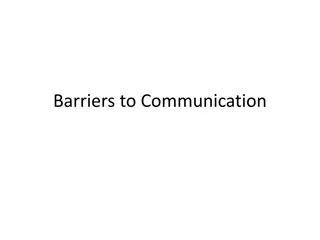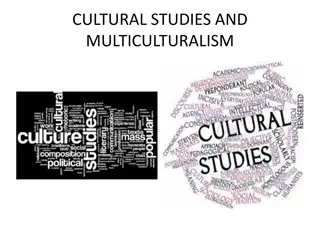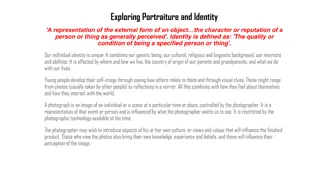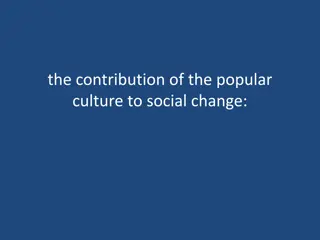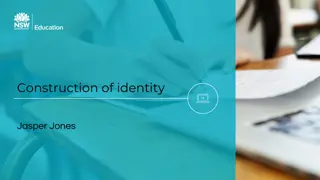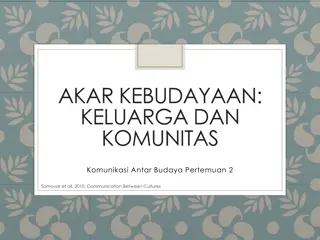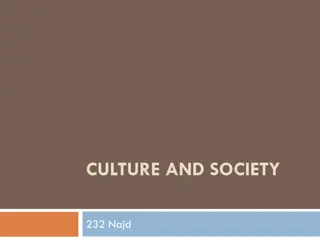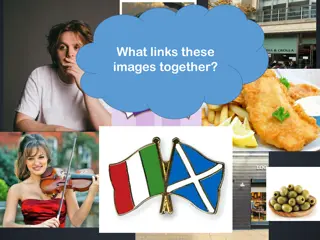Understanding Cultural Identity in Intercultural Communication
Cultural identity is a vital aspect of intercultural communication, influencing individuals' perceptions and interactions. This complex concept encompasses various social identities such as racial, ethnic, gender, national, regional, organizational, personal, cyber, and fantasy identities. Developing a clear understanding of one's identity is crucial for psychological well-being and effective communication across cultures.
- Cultural Identity
- Intercultural Communication
- Social Identities
- Psychological Well-being
- Identity Development
Download Presentation

Please find below an Image/Link to download the presentation.
The content on the website is provided AS IS for your information and personal use only. It may not be sold, licensed, or shared on other websites without obtaining consent from the author. Download presentation by click this link. If you encounter any issues during the download, it is possible that the publisher has removed the file from their server.
E N D
Presentation Transcript
Ilmu Komunikasi Identitas Budaya Bag. 1 Cultural Identity Part 1 Komunikasi Antar Budaya Pertemuan 5
Who are you? Write down ten words that you think describe you
The Importance of Identity Identity development plays a critical role in the individual s psychological well-being. 1 An understanding of identity is also an essential aspect of the study of intercultural communication 2 The unsettled world that we all live in is in part influenced by adherence to varying perceptions of identity 3 Identity influences and guides expectations about your own and others social roles, and provides guidelines for your communication interaction with others. 4 Samovar et all. 2010. Communication Between Cultures Halaman 182-184 Versi Bahasa Indonesia
Explaining Identity The abstract, complex, and dynamic concept A person s self-definition as a separate and distinct individual, including behaviors, beliefs, and attitudes Gardiner and Kosmitzki. Reflective self-conception or self-image that we each derive from our family, gender, cultural, ethnic, and individual socialization process. Identity basically refers to our reflective views of ourselves and other perceptions of our self-images. Ting-Toomey. Cultural identity (Fong): The identification of communications of shared system of symbolic verbal and nonverbal behavior that are meaningful to group members who have a sense of belonging and who share traditions, heritage, language, and similar norms of appropriate behavior. Cultural identity is a social construction. Samovar et all. 2010. Communication Between Cultures Halaman 184-186 Versi Bahasa Indonesia
Selected Social Identities Remember! We have more than one identity. 01 Racial Identity 02 Ethnic Identity - Mongoloid - Caucasoid - Negroid - Capoid - Australoid Derived from a sense of shared heritage, history, traditions, values, similar behaviors, area of origin, and in some instances, language. 03 04 Gender Identity National Identity The meanings and interpretations we hold concerning our self-images and expected other-images of femaleness and maleness . (Ting- Toomey) Refers to your nationality Samovar et all. 2010. Communication Between Cultures Halaman 186-191 Versi Bahasa Indonesia
Selected Social Identities Remember! We have more than one identity. 05 Regional Identity 06 Organizational Identity Every country can be divided into a number of different geographical regions, and often these regions reflect varying cultural traits. In some cultures, a person s organizational affiliation can be an important source of identity. 07 08 Personal Identity Cyber and Fantasy Identity Consist of those characteristics that set one apart from others in his or her in-group, those things that make one unique, and how one sees oneself. The internet provides an opportunity to escape the constraints of everyday identities. (Suler) Samovar et all. 2010. Communication Between Cultures Halaman 191-194 Versi Bahasa Indonesia
Acquiring and Developing Identities Three-stage Model from Phinney Final stage Second stage Ethnic Achievement First stage Ethnic identity search Unexamined ethnic identity Samovar et all. 2010. Communication Between Cultures Halaman 195 Versi Bahasa Indonesia
Acquiring and Developing Identities Four-stage Model from Martin and Nakayama Final stage Third stage Integration Second stage Resistance and separatism First stage Conformity Unexamined identity Based on how they were achieved, your identities can also be classified as ascribed or avowed. This refers to whether your identities were obtained involuntarily or voluntarily. Samovar et all. 2010. Communication Between Cultures Halaman 196 Versi Bahasa Indonesia
Establishing and Enacting Cultural Identity The communication employed to create and enact identity can take a variety of forms, including conversation, commemorations of history, music, dance, ritual, ceremonial, and social drama of all sorts. Identity can be displayed in cultural rites of passage. Samovar et all. 2010. Communication Between Cultures Halaman 196-199 Versi Bahasa Indonesia
Identity in Intercultural Interactions Your culture has shaped your understanding and expectations as to what are the correct communication practices for various social setting. However, this understanding are cultural bound, and what is appropriate in one culture may be inappropriate in another. In order to communicate effectively in an intercultural situation, an individual s avowed cultural identity and communication style should match the identity and style ascribed to him or her by the other party. Samovar et all. 2010. Communication Between Cultures Halaman 199-200 Versi Bahasa Indonesia
Identity in Multicultural Society Cultural Identity becomes blurry in the midst of cultural integration, bicultural interracial marriages, adaptation processes. Chuang. interactions, the mutual and Intercultural transients (Omwumechilli et al): Travelers who regularly alternate residence between their homeland and a host foreign country and must manage frequent cultural changes and identity negotiations. Issues of identity can be expected to remain complex and perhaps become more so as multiculturalism increasingly contemporary society. characterizes Samovar et all. 2010. Communication Between Cultures Halaman 200-202 Versi Bahasa Indonesia


